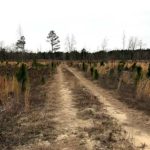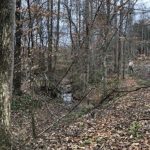Forest Soils
Soil forms the foundation of all woodlands, determining what types of plant species can grow well, which in turn determines what type of animals can live in a particular forest. Soil also plays an important role in watershed health. The type of soil in a given location determines how much food and moisture are available for trees and other plants. Some soil types hold water well and provide a good medium for the microorganisms that break down organic matter into nutrients. Others do not. This crucial difference in soils can determine which trees are able to survive and thrive in a particular location.
ATFS Standard 4: Air, Water and Soil Protection
Forest-management practices maintain or enhance the ecosystems and ecosystem services provided by the forest including air, water, soil and site quality.
 |
LEARN ABOUT YOUR SOILYour soil is one of the most important factors that affects forest management decisions. In this section, learn how soil is formed and the basic layers of soil, about site index, review your county soil survey or use a web based app to determine what soil type you have. |
 |
SOIL QUALITY AND HEALTHSoil quality or health is a major factor in determining the regeneration, survival and long-term growth of forest trees as well as the quality of wildlife habitat and other products a forest provides. |
 |
SOIL EROSIONA certain amount of soil impact is inevitable when conducting forest management activities. Identifying and minimizing these impacts to the soil is an essential part of sustainable forest management. Learn about North Carolina’s requirements and how to protect your soil here.
|
